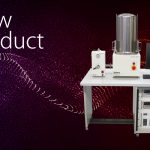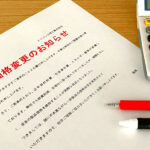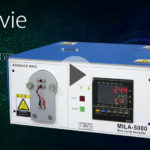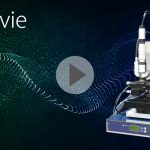Polymeric Thermoelectric Sheet Evaluation System in Thickness Direction【ZEM-d】
ADVANCE RIKO, Inc. (Head Office: Yokohama, Kanagawa-Pref., President & CEO: Narishi Gonohe) of CHINO Group has developed Polymeric Thermoelectric Sheet Evaluation System in Thickness Direction (ZEM-d), based on the know-how owned by National Institute of Advanced Industrial Science and Technology (AIST).
This new system can evaluate Seebeck coefficient and electric resistivity in thickness direction of thermoelectric materials. We are planning to commence sales of this from April, 2019.
Product Summary
In recent years, technologies that use effectively thermal energy discharged from various devices like incinerators and automobile engine rooms and recover them as renewable energy have been gathering the attention.
Among them, power generation technology using thermoelectric materials without driving parts while converting thermal energy into electricity is focused on a maintenance-free and clean technology. The demand for such power generation technology is increasing.
ADVANCE RIKO, Inc. has been selling evaluation systems for thermoelectric materials and thermoelectric modules in the development of thermoelectric power generation technology for a long time.
Thermoelectric properties of materials consist of 3 elements (Seebeck coefficient, electric resistivity and thermal conductivity). For the evaluation of Seebeck coefficient and electric resistivity with the existing system, it was only available to measure in-plane direction (longitudinal direction) as shown in Fig.1.
On the other hand, for the evaluation of thermal conductivity, the measurement in the thickness direction by the flash method has been used mainly, and therefore we cannot evaluate 3 elements in the same direction. To solve this issue, we developed a new system as shown in Fig.2, which can evaluate Seebeck coefficient and electric resistivity in the thickness direction of the thermoelectric materials.
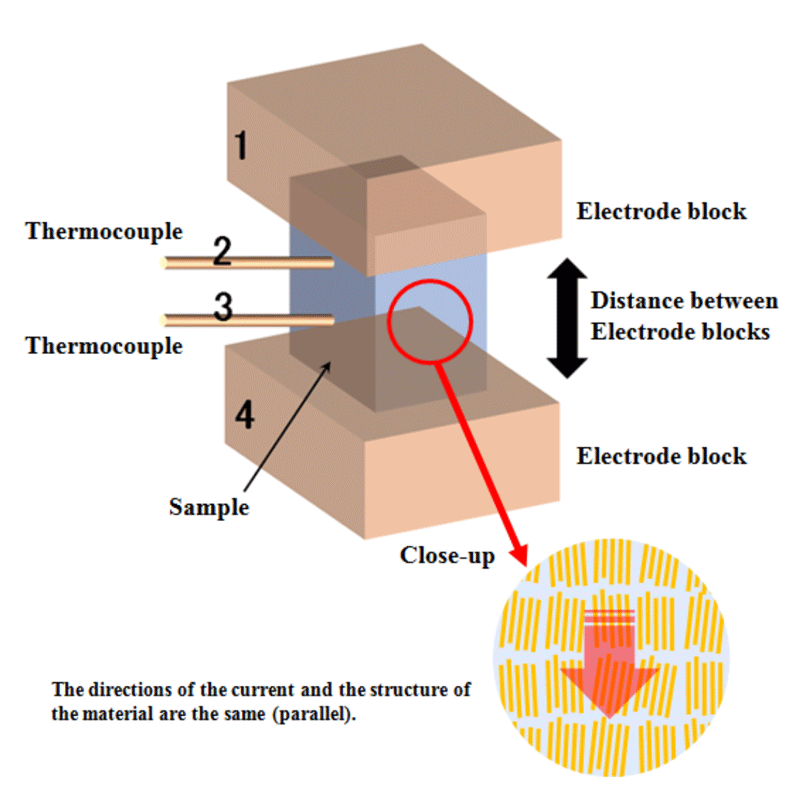
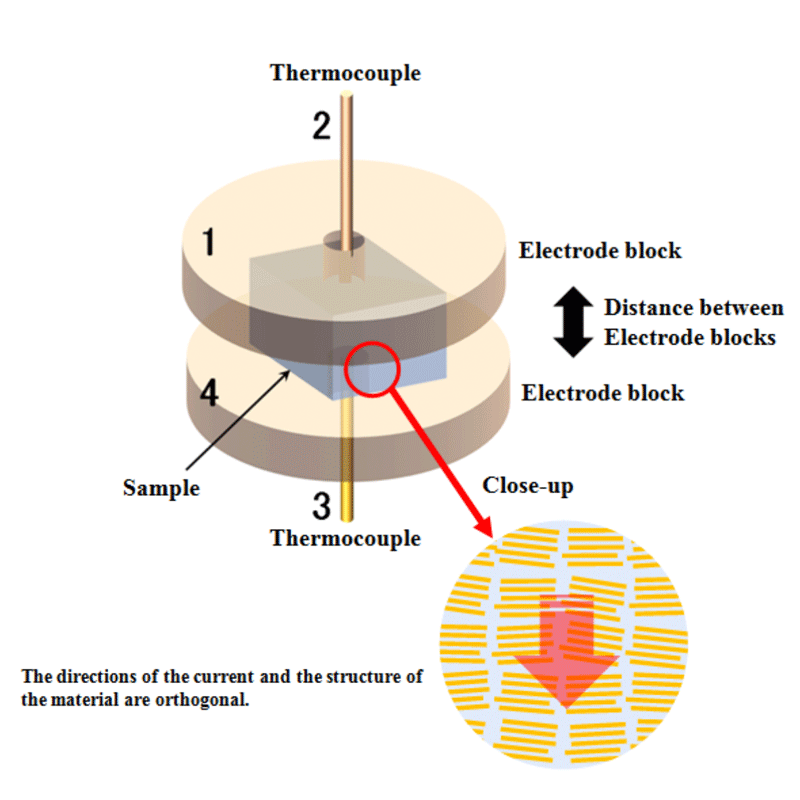
In the various types of thermoelectric materials, the measurement direction of the metal-based thermoelectric materials has not been discussed so much because they were considered to have high uniformity inside the sample due to their main manufacturing processes.
On the other hand, organic thermoelectric materials have attracted attention as low-cost, highly productive and flexible materials in recent years, and it has been pointed out that organic materials have anisotropy.
This time, it becomes possible to measure Seebeck coefficient and electrical resistivity in the thickness direction with this new system, and we can evaluate the thermoelectric properties on anisotropic materials at the same measurement direction.
Measurement principle
As shown in Fig.3, thermocouples at concentric ring-shaped electrodes and the front and back of the sheet sample can be regarded as four probes. A current is passed through the ring-shaped electrode (1 and 4 shown in Fig.3), and the voltage is measured by the center thermocouples as electrode (2 and 3 shown in Fig.3). In addition, several measurements are performed by changing distances between the electrodes (“d” in Fig.3), and a value obtained by extrapolating d is used as an approximation value of the four probe method. Figure 4 shows the outline of how to measure the Seebeck coefficient in the thickness direction. The upper and lower temperatures of the sample are individually controlled to generate a temperature difference between upper and lower surfaces of the sample. As shown in Fig.5, the temperature of the upper surface is increased by ΔT1 from the measured temperature (T0: sample center temperature). At the same time, the temperature of the lower surface is reduced by ΔT1. This results in the temperature difference of two times that of ΔT1. And the thermoelectromotive force (ΔV1) is measured by the center electrodes (thermocouples). Similarly, temperature differences are changed equally such as ΔT2, ΔT3 to obtain thermoelectromotive forces ΔV2 and ΔV3. In this way, the Seebeck coefficient is calculated from the slope of the thermoelectromotive forces and the temperature differences. Since the temperatures at the upper surface and the lower surface of the sample are changed by an equal amount from the center temperature in the thickness direction, the measured temperature can be kept constant. Therefore, it is possible to obtain Seebeck coefficient in the thickness direction of the sheet sample with high accuracy.
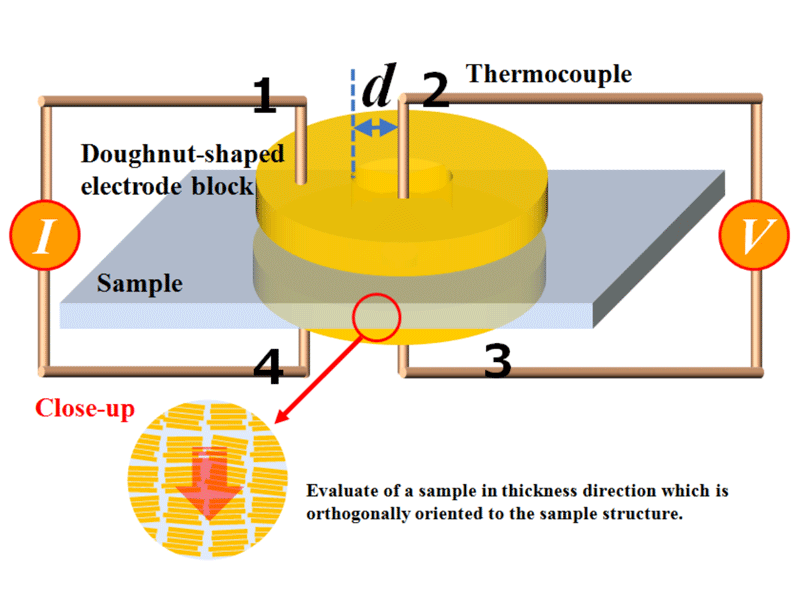
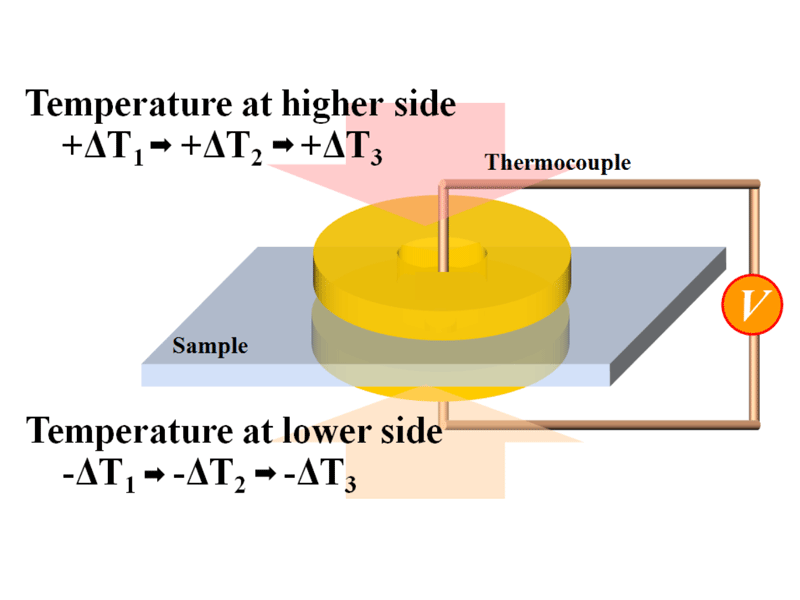
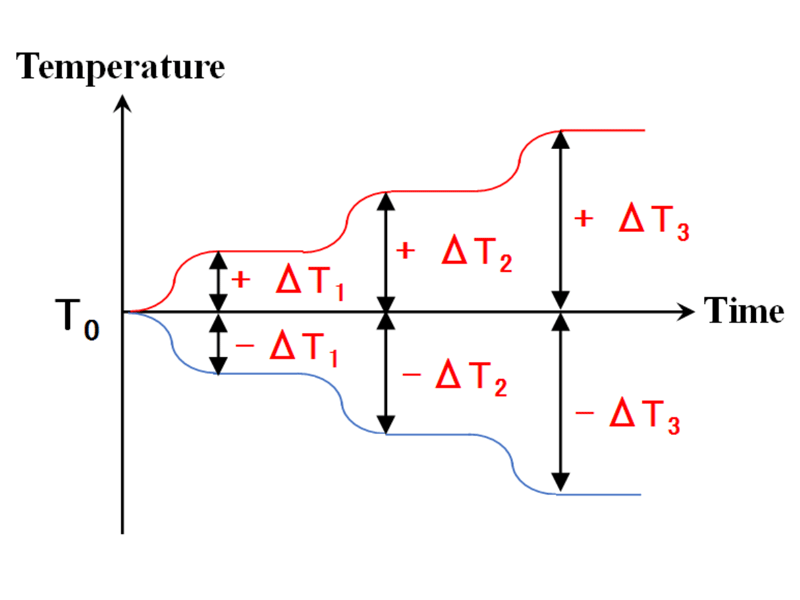
List Price
Polymeric Thermoelectric Sheet Evaluation System in Thickness Direction 【ZEM-d】 JPY 9,800,000 ~ (domestic price) *accessories, freight, tax excluded
Sales target for the first year
10 units
Features
- It is possible to evaluate the Seebeck coefficient and electrical resistivity in the thickness direction with generating temperature difference.
- Automate the V-I plot measurement for determining the contact condition of the lead wires when setting a sample and set the optimum current.
- It is also possible to measure the in-plane direction for a flexible sheet sample.(Optional)
Applications
- Evaluation of the thermoelectric properties in the thickness direction of organic and inorganic thermoelectric materials
- Evaluation of the anisotropy of flexible materials
Specifications
- Measurement properties : Seebeck coefficient, Electric resistivity
- Temperature range : 200°C Max. (High temperature side on a sample)
- Sample size : Cross-section area: 30mm-dia. Max. Length: 0.01~20mm
- Measurement atmosphere : In air, inert gas
ADVANCE RIKO, Inc.
Toshifumi Saito, Sales Department
TEL : +81-45-931-2285 FAX : +81-45-933-9973
